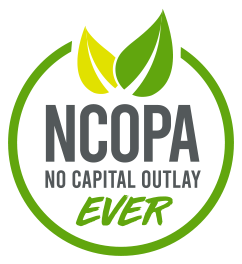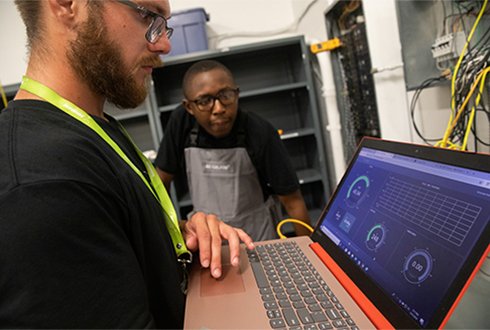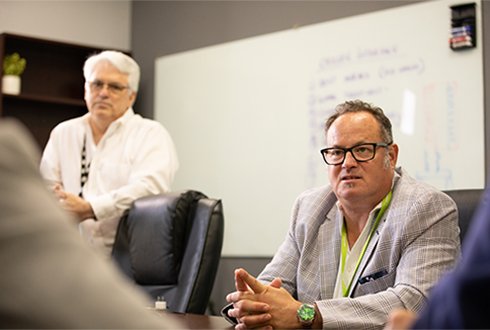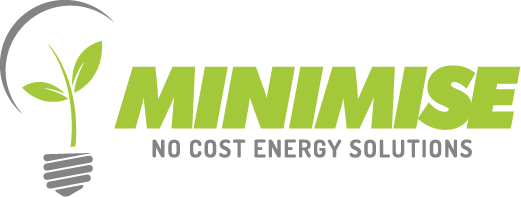If we are going to do it, you know, help save the planet, we might as well do it right.
Here are Minimise’s thoughts…
The Paris Agreement, also known as the Paris Accord, is a declaration by just under 200 countries to reduce the global temperature by 2% by 2050. To do this will take a massive reduction in greenhouse gasses, the development of yet-to-be-seen technological innovations, and a big old bundle of money. Ask Bill Gates. Or after the blog, click on the link just below to get a full grasp of it.
https://unfccc.int/process-and-meetings/the-paris-agreement/the-paris-agreement
Problem #1: Most countries have no idea how to get to the goal despite pledges to do so. The path gets more difficult as commitments double down every five years until 2050.
Problem #2: A 30-year plan is hard enough to create but this gets compounded as energy costs are consistently rising. As a result, the financial implications become as dire as the impact on the Climate.
Problem #3: Coalition-building by so many countries requires a steadfast focus and tangible positive results. Even here in the United States, it’s tough in a country that has a potential new President every four years. In other words, it’s wrought with roadblocks and will take a ridiculous amount of people’s energy.
Difficult planning, rising commitments, AND financial negatives are tough equations to justify to yourself. Much less to your community.
Problem #1: Most countries have no idea how to get to the goal despite pledges to do so. The path gets more difficult as commitments double down every five years until 2050.
Problem #2: A 30-year plan is hard enough to create but this gets compounded as energy costs are consistently rising. As a result, the financial implications become as dire as the impact on the Climate.
Problem #3: Coalition-building by so many countries requires a steadfast focus and tangible positive results. Even here in the United States, it’s tough in a country that has a potential new President every four years. In other words, it’s wrought with roadblocks and will take a ridiculous amount of people’s energy.
Difficult planning, rising commitments, AND financial negatives are tough equations to justify to yourself. Much less to your community.

There are many promising initiatives underway and with them many more alliances. For instance, https://www.globalcovenantofmayors.org has over 10,000 cities representing nearly one 1 billion people, and is very focused on community solutions.
Alongside this, energy-friendly technologies are coming down in price making them financially feasible. Previously, technologies like sustainable materials, green energy creation, and energy efficiency tools were high-priced and hard to cost-justify. However, there has been an exponential decrease in these solutions due to increased production, more cost-effective strategies, and government incentives.
“Being Sustainable” is becoming ubiquitous, not the exception. The Paris Accord is more than 200 countries being in accord with these goals. Consequently, it’s not just a government issue to solve. To do it, we are seeing an increased commitment to Sustainability by more and more communities, businesses, and individual citizens.
“The picture becomes clearer when you start to see everyone doing their part, doing what is within their reach,” said Daniel Badran, Chairman, and CEO of Minimise USA and Minimize Global.
Private enterprise is incredibly critical in the pursuit of this goal. One person leading by example is Tony Miliken, the Chief Sustainability Officer of Anheuser Busch and his work with other top brands on the 100+ Accelerator, focused on reducing the carbon impact on the supply chain.
For climate-positive strategies to be readily adopted the number one roadblock that needs to be removed is the financial one. We need to make the financial model for getting to the promised land profitable. Think of the current race for space to Mars. Why do Elon Musk and Jeff Bezos want to spend all their money on getting to the red planet? They project profits to that eventual destination to be astronomical. It’s just the opening ante to play the Billionaire Board Game.
Back to challenge at hand, saving the planet. Or as we like to say #3vs30

Minimise created a financial model that is a significant piece in making the Paris Accord possible. Minimise can prove to address climate commitments in three short years, instead of the 30-year goals of the Paris Accord. Hence

We take the wasted electricity of cities, companies, and other public and private entities and turn it into currency to fund all the solutions needed to dramatically reduce their carbon footprint, in turn, driving massive savings and dollars back into solving infrastructure issues.

Minimise created a financial model that is a significant piece in making the Paris Accord possible. Minimise can prove to address climate commitments in three short years, instead of the 30-year goals of the Paris Accord. Hence

We take the wasted electricity of cities, companies, and other public and private entities and turn it into currency to fund all the solutions needed to dramatically reduce their carbon footprint, in turn, driving massive savings and dollars back into solving infrastructure issues.
“By attacking the issue quickly and holistically we help you avoid the escalating costs of money, inflation, goods and services. By providing all of the solutions in a short time-frame we greatly expand the savings window – taking out the gradual and locking in an accelerated pathway to Sustainability and the Paris Accord,” said Badran.

“By attacking the issue quickly and holistically we help you avoid the escalating costs of money, inflation, goods and services. By providing all of the solutions in a short time-frame we greatly expand the savings window – taking out the gradual and locking in an accelerated pathway to Sustainability and the Paris Accord,” said Badran.

Under the NCOPA, waste is identified through intricate monitoring and historical analysis, bespoke solutions from around the globe are instituted and integrated to work to maximum efficiency and from that savings, money is driven back into the city or organization to tackle other issues at their choice.


Now, back to the idea of why the NCOPA is profitable to everyone. For the client, they get EVERYTHING at no cost. For cities and school districts, it means not asking taxpayers for money. For businesses, it means not diluting shareholder value or planning projects that get pushed down the road year after year. For the funders, such as global banking institutions and pension funds, it means a predictable bond-like return on their investment, protecting employee nest eggs today and for generations.
As a result, not only is there a positive environmental impact, but also fiscal prudence, and community engagement impact. Everyone profits through the NCOPA.#3vs.30
Find out more at www.minimiseglobal.com
Best regards,
Tim Breitbach



